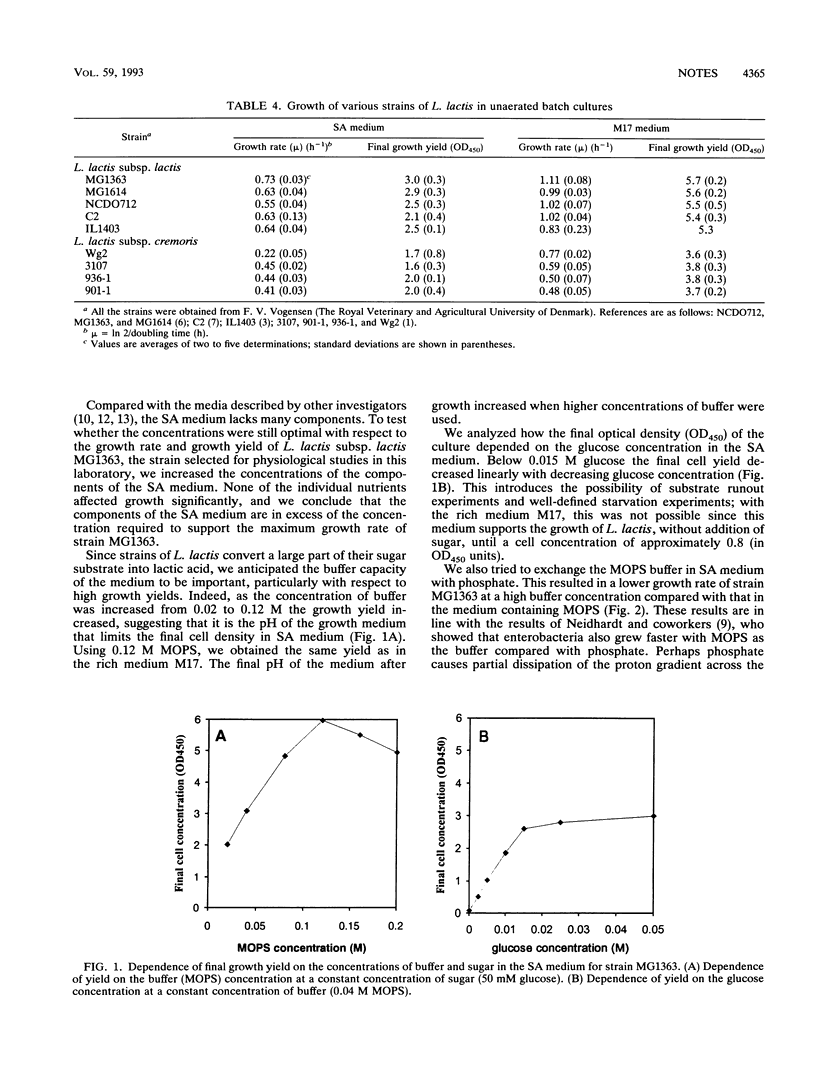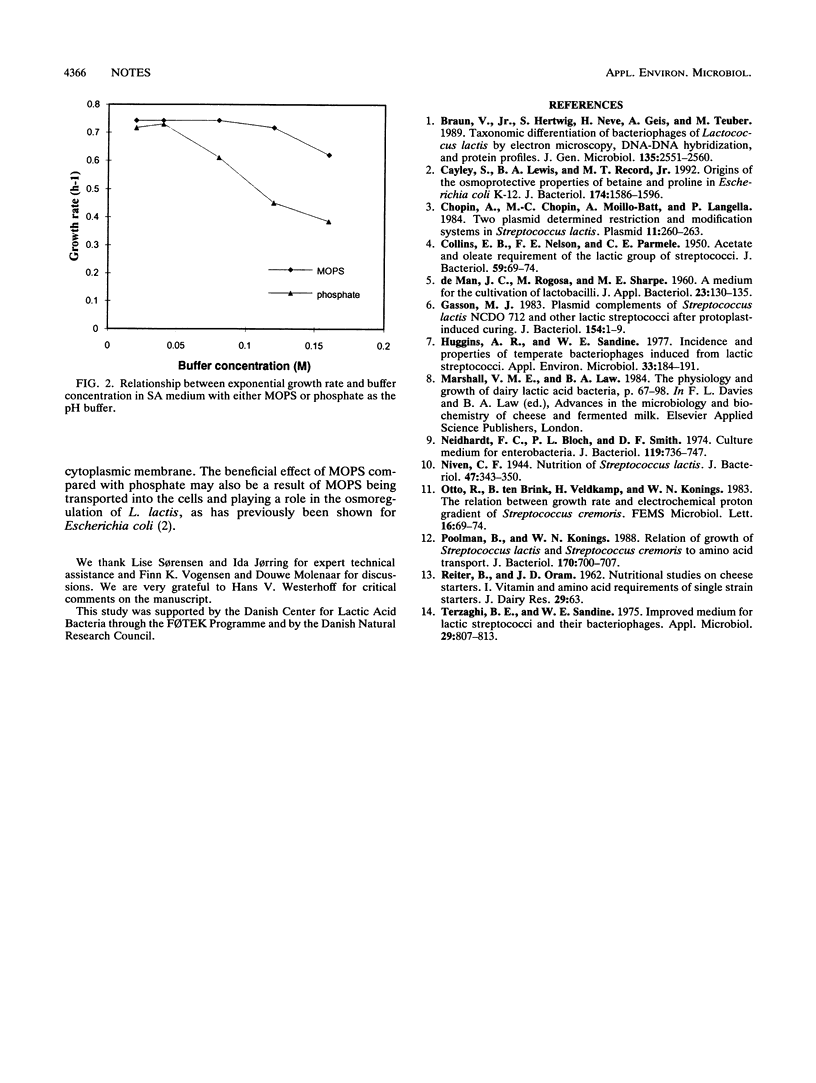Abstract
A minimal growth medium containing glucose, acetate, vitamins, and eight amino acids allowed for growth of Lactococcus lactis subsp. lactis, with a specific growth rate in batch culture of μ = 0.3 h-1. With 19 amino acids added, the growth rate increased to μ = 0.7 h-1 and the exponential growth phase proceeded until high cell concentrations were reached. We show that morpholinepropanesulfonic acid (MOPS) is a suitable buffer for L. lactis and may be applied in high concentrations.
Full text
PDF



Selected References
These references are in PubMed. This may not be the complete list of references from this article.
- COLLINS E. B., NELSON F. E., PARMELEE C. E. Acetate and oleate requirements of the lactic group of streptococci. J Bacteriol. 1950 Jan;59(1):69–74. doi: 10.1128/jb.59.1.69-74.1950. [DOI] [PMC free article] [PubMed] [Google Scholar]
- Cayley S., Lewis B. A., Record M. T., Jr Origins of the osmoprotective properties of betaine and proline in Escherichia coli K-12. J Bacteriol. 1992 Mar;174(5):1586–1595. doi: 10.1128/jb.174.5.1586-1595.1992. [DOI] [PMC free article] [PubMed] [Google Scholar]
- Chopin A., Chopin M. C., Moillo-Batt A., Langella P. Two plasmid-determined restriction and modification systems in Streptococcus lactis. Plasmid. 1984 May;11(3):260–263. doi: 10.1016/0147-619x(84)90033-7. [DOI] [PubMed] [Google Scholar]
- Gasson M. J. Plasmid complements of Streptococcus lactis NCDO 712 and other lactic streptococci after protoplast-induced curing. J Bacteriol. 1983 Apr;154(1):1–9. doi: 10.1128/jb.154.1.1-9.1983. [DOI] [PMC free article] [PubMed] [Google Scholar]
- Huggins A. R., Sandine W. E. Incidence and properties of temperate bacteriophages induced from lactic streptococci. Appl Environ Microbiol. 1977 Jan;33(1):184–191. doi: 10.1128/aem.33.1.184-191.1977. [DOI] [PMC free article] [PubMed] [Google Scholar]
- Neidhardt F. C., Bloch P. L., Smith D. F. Culture medium for enterobacteria. J Bacteriol. 1974 Sep;119(3):736–747. doi: 10.1128/jb.119.3.736-747.1974. [DOI] [PMC free article] [PubMed] [Google Scholar]
- Niven C. F. Nutrition of Streptococcus lactis. J Bacteriol. 1944 Apr;47(4):343–350. doi: 10.1128/jb.47.4.343-350.1944. [DOI] [PMC free article] [PubMed] [Google Scholar]
- Poolman B., Konings W. N. Relation of growth of Streptococcus lactis and Streptococcus cremoris to amino acid transport. J Bacteriol. 1988 Feb;170(2):700–707. doi: 10.1128/jb.170.2.700-707.1988. [DOI] [PMC free article] [PubMed] [Google Scholar]
- Terzaghi B. E., Sandine W. E. Improved medium for lactic streptococci and their bacteriophages. Appl Microbiol. 1975 Jun;29(6):807–813. doi: 10.1128/am.29.6.807-813.1975. [DOI] [PMC free article] [PubMed] [Google Scholar]


